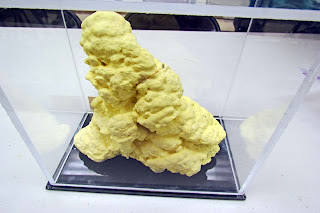Then we drove through a tunnel only to emerge on the other side to one of the most beautiful scenes I've ever seen.
The island has an unusual irregular shape that was caused when two large landslides from two shield volcanoes removed approximately one-third of the northeastern portion of the island and approximately half of the western side. What remains along the western coast of Oahu is the Koolau range (2.7 million years in age). The volcano was destroyed in prehistoric times when the entire eastern half, including most of the summit caldera, slid into the pacific Ocean. The dramatic remnant of the shield volcano has been transformed over thousands of years of constant gales that have carved beautiful rippling rock faces, near-vertical sides, and precipitous cliffs. The other mountains make up the older Waianae Range (3.9 my in age) that extends along the west side of the island. Remains of these dramatic landslides lie as massive fragments strewn nearly 100 miles (160 km) over the ocean floor to the northeast of Oahu.
Last night I gave my agate talk to the Honolulu mineral club. Thanks to Barb and Tom for driving as well as attending and helping me. The club had a few specimens on display. Below is a sulpher specimen collected on the Big Island.
Below is a specimen of goethite...
Dog tooth calcite....
Calcite....
Another sulphur....















No comments:
Post a Comment